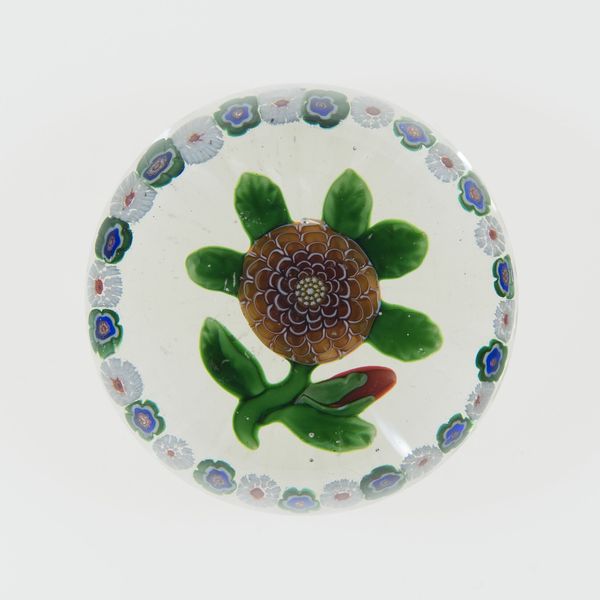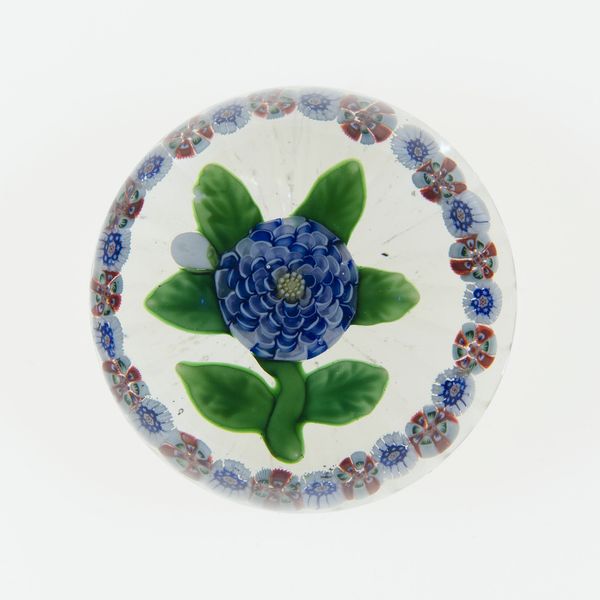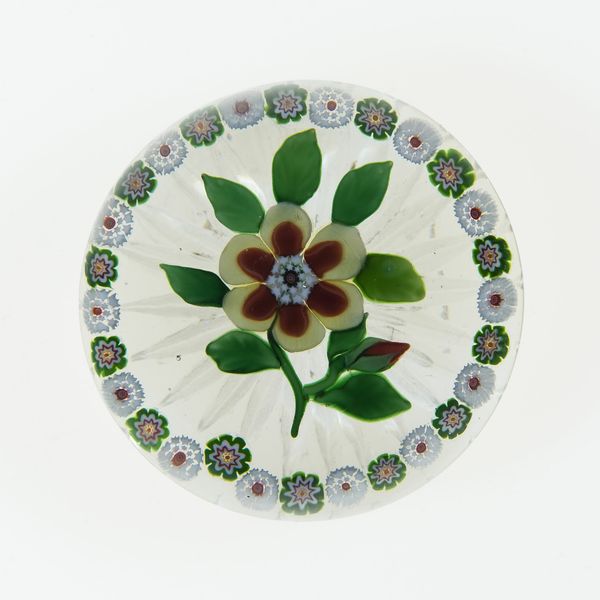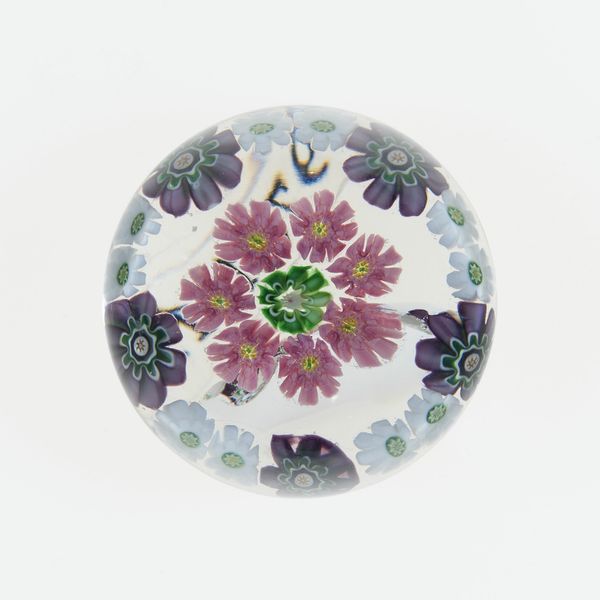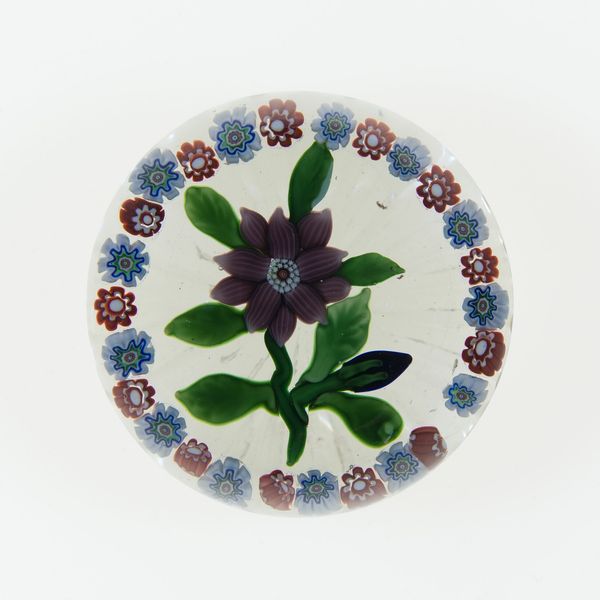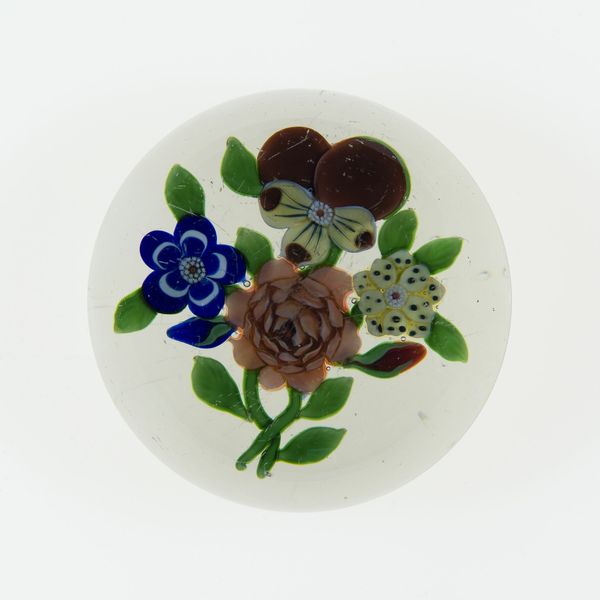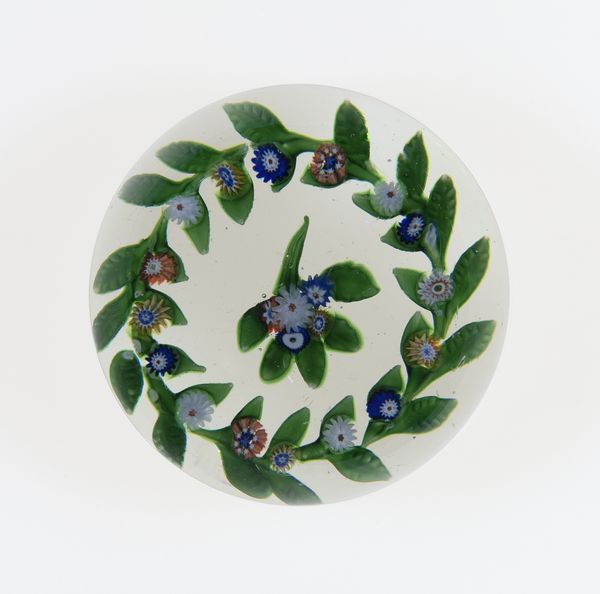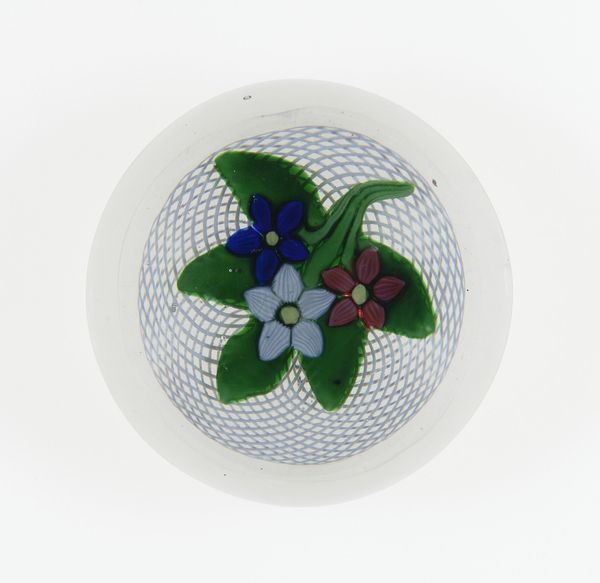
paper, glass
#
paper
#
glass
#
decorative-art
Dimensions: Diam. 6.4 cm (2 1/2 in.)
Copyright: Public Domain
Curator: Let’s discuss this fascinating paperweight created by Baccarat Glassworks, sometime between 1845 and 1860. You can find it here at the Art Institute of Chicago. Editor: It’s exquisite! The clarity of the glass, the encased floral design… it gives a feeling of stillness, doesn't it? Like a preserved moment in a secret garden. Curator: Indeed. During this era, paperweights weren't mere desk accessories; they reflected the burgeoning middle class’s desire for beauty and status through collecting decorative arts. Their presence spoke of leisure and refined taste. Editor: I'm captivated by how the artist uses color and form. The central blue dahlia is encircled by delicate, multicolored florets. It’s a mesmerizing exercise in circular composition. Note how it creates an echoing, fractal effect. Curator: Consider also that Baccarat, among other glass factories, strategically aimed their production at wealthy patrons and royal families throughout Europe, crafting not just objects of utility, but also trophies of industry and luxury. Editor: You know, looking at the precision, the controlled bubbles within the glass... It demonstrates remarkable skill and material understanding, wouldn't you agree? I'd be very curious about their exact production processes. Curator: Glass production at Baccarat was a carefully guarded secret, relying on skilled labor often passed down through generations. Also the popularity of these glass paperweights mirrors trends in botany and collecting that gripped much of the nineteenth century, making items like these fashionable objects among women in particular. Editor: Interesting...It strikes me now—the symbolism might extend beyond mere decoration. Flowers can represent so many things; remembrance, beauty, and also the fleeting nature of life, captured forever inside the unyielding glass. Curator: I find that so plausible! Thanks, by understanding its history and material worth, as well as decoding some visual cues, this small object certainly grants us insight into its contemporary moment. Editor: Yes, precisely! Seeing it like this definitely highlights just how art invites this intersection of sensory experience and intellectual analysis.
Comments
No comments
Be the first to comment and join the conversation on the ultimate creative platform.
